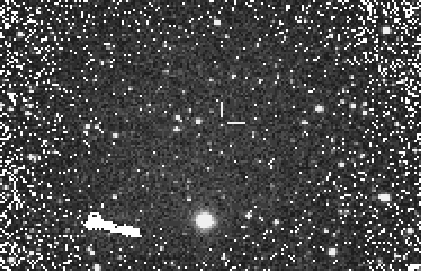
DM Lyr was detected in outburst by the Director visually on July 7.0431 UT at magnitude 14.5, and confirmed by Tonny Vanmunster (CCD) and John Day (visually) shortly afterwards. This was the first outburst detected since November 1995 (Pietz), and the eighth since its first known outburst in 1992. Due to its position, coverage of the star is difficult during the winter months, and it is quite possible that several outbursts have been missed.
The July 1996 outburst - unlike the others - proved to be a long, bright one
(see light curve), which caused several
observers to wonder if it could possibly be a supermaximum which is
indicative of a UGSU star (GCVS classification of DM Lyr is UG).
Observers at Kyoto University, led by Daisaku Nogami, carried out V band CCD
photometry on July 16th with the 60cm reflector and detected superhumps of
0.1 mag amplitude, thus reclassifying DM Lyr as a UGSU star.
Their preliminary period analysis gave 0.066 (+-0.002) day as the best
estimated superhump period. At the same time Tonny Vanmunster (CBA, Belgium)
also detected superhumps with his 25cm SCT, ST-7 unfiltered CCD. His
peliminary analysis of the superhump period yielded a best value of 0.067
+/- 0.001d (PDM method) and a mean amplitude of 0.08 mag - all in good
agreement with the Ouda team at Kyoto.
Although unfiltered CCD measures are photometrically inaccurate, employing
them in this type of work (discovery of superhumps and determination of
their period) can and does yield valuable and exciting results.


DM Lyr continues to be monitored as part of the Recurrent Objects Programme, and observers are encouraged to monitor it for further outbursts. Filtered CCD observations would be especially welcomed.